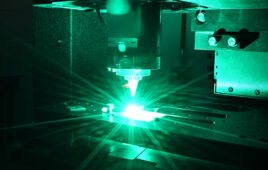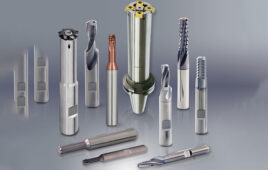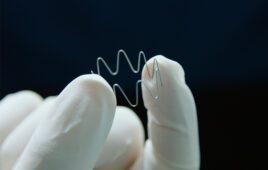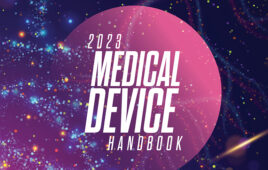Medical product tooling decisions play a major role in per part cost and turnaround time.
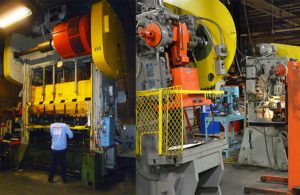
From left to right: A progressive die machine and a row of stamping presses. [Image courtesy of DureX]
In the medical industry, metal parts play an integral role in diagnostic, testing, medical instruments and equipment. Although certain complex metal parts can only be machined, thinner gauge parts and enclosures are typically stamped using hard tooling or fabricated using lasers, turret presses or press brakes.
To meet functional and longevity requirements, medical device OEMs frequently turn to contract metal fabricators and stampers for assistance with tooling decisions that can significantly reduce the price-per-part and turnaround time. The progression ranges from soft to hard tooling; hybrid approaches; staged tooling; and fully progressive dies.
Soft tooling
Low volume part manufacturing for the medical industry often involves soft tooling for sheet metal fabrication. Usually, this process entails having a flat or slightly formed part that has holes, slots or tabs punched in it by a CNC laser or turret punch press, followed by bending using a press brake.
Soft tooling typically costs $75 to $500, but can cost up to $2,000–3,000 for more complex parts. It can work for part prototyping and low volume orders, but the cost per part is higher because it can take minutes of machine time to make each part.
A strategy to lower or eliminate soft tooling cost is to borrow tooling from a supplier’s “library of tools.” Contract metal manufacturing facilities that have served a variety of markets for decades can offer an inventory of soft tools in many sizes and shapes without charge.
Hard tooling
When critical tolerances are required or volumes increase to 15,000 units or more annually, OEMs often benefit from moving from soft tooling to hard tooling to reduce costs. The cost of hard tooling can vary from $5,000 to $300,000 depending on size, complexity and whether it is designed to produce a finished part.
One OEM started at 500 parts per month with soft tooling. However, when production requirements increased to 4,000 parts a month, they moved to hard tooling to reduce the price from $22 to $15 a part. With a hard tooling cost of about $85,000, they achieved ROI in about four months.
Hybrid tooling
As the name implies, hybrid tooling is a combination of soft and hard tooling. Depending on the part, it might begin as a flat piece of metal that is punched or formed with a soft tool, with further forming by a hard tool.
For example, an enclosure could be started in a turret that punches all the holes and slots before it is moved to a hard die that forms up the sides into a box in one operation.
Instead of putting a flat piece of metal in a brake and hitting it four times to bend the two sides and two ends, a die could be used to hit it once so it only takes 30 seconds to make the part instead of 2 minutes.
Staged tooling
To create metal parts for medical equipment manufacturers at greater speed and volume as well as lower price per part, staged tooling can be used. This involves moving a metal part between multiple stage tools, so the work is performed in unlimited processes that utilize hard tooling.
For example, instead of taking 5 minutes in a machine to punch all the features individually using a soft tool, a blanking die could be used to punch everything in one hit in seconds. Then it could be put into a forming die and formed into shape.
Progressive dies
The fastest, highest volume part production is achieved by a progressive die. This method accomplishes multiple operations in a single process using hard tooling. Depending on the part, a progressive die utilizes metal coil and can often produce a finished part with every machine cycle.
For example, a customer was spending about $125 for a metal card cage that held circuit boards. When volume rose to 1,000 parts a week, the cost was reduced to $55 per cage by switching to multiple staged tools. Although the hard tooling cost was substantial – about $350,000 – the OEM achieved ROI in only 5 to 6 weeks.
Bob Denholtz is president of DureX, an ISO 9001 registered contract metal manufacturing facility of 120,000 square feet based in New Jersey.
The opinions expressed in this blog post are the author’s only and do not necessarily reflect those of Medical Design and Outsourcing or its employees.

